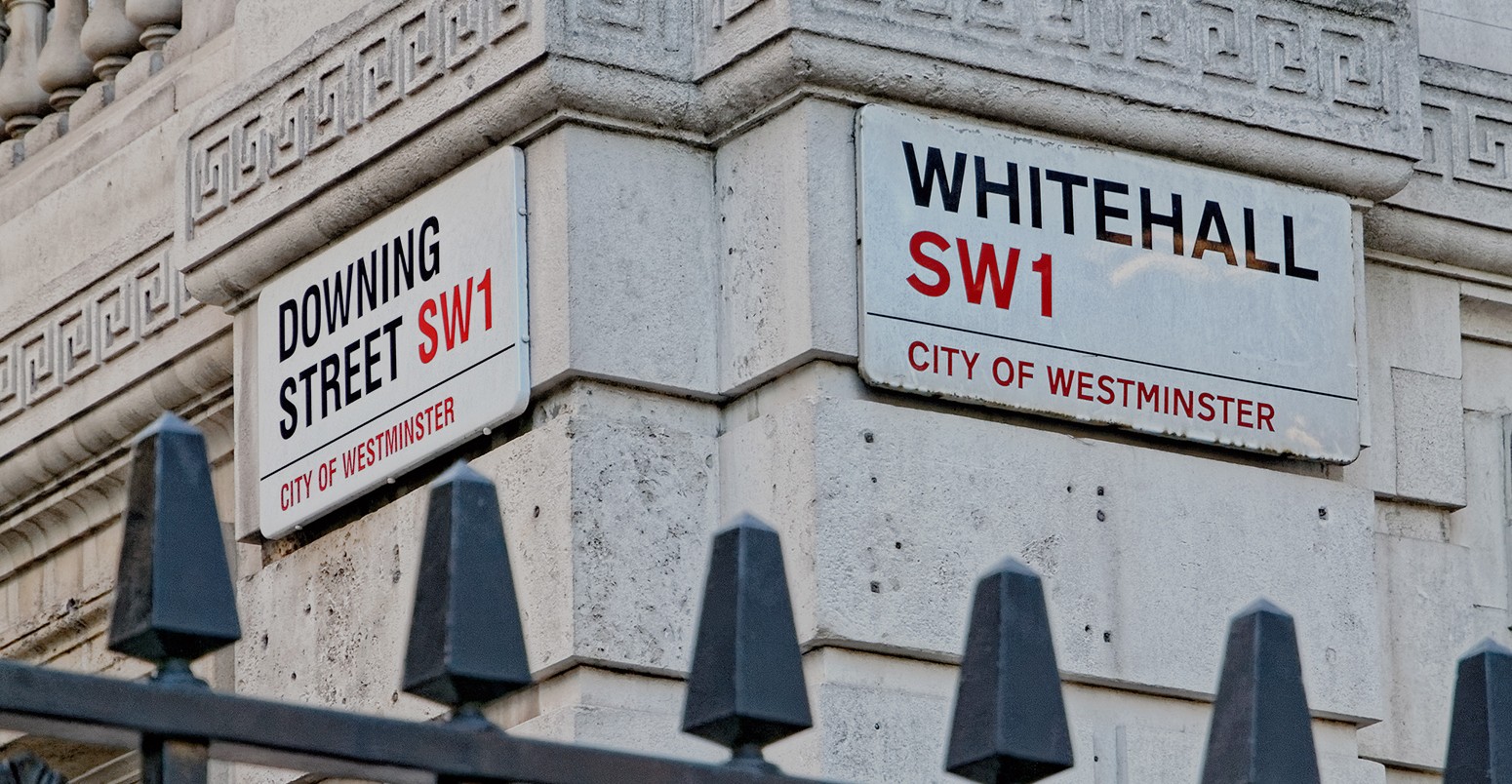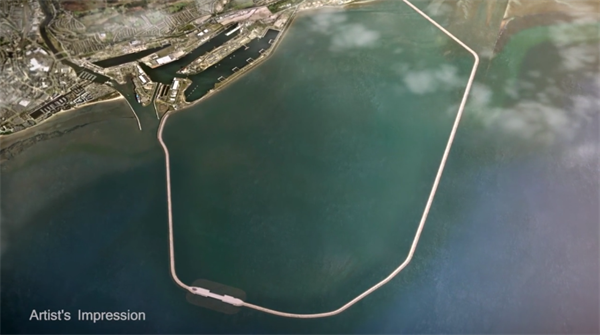
A summary of climate and energy announcements in the Autumn statement 2014
Carbon Brief Staff
12.03.14Carbon Brief Staff
03.12.2014 | 1:00pm- £2.3 billion for flood defences
- £15 billion for road upgrades
- Tidal lagoon energy project included in national infrastructure plan
- £430 million in tax cuts for the North Sea oil and gas industry
- Sovereign wealth fund for shale gas proceeds in the north of England
Chancellor George Osborne today announced new funding for flood defences, more roads, and support for a new tidal energy project.
The policies were part of the Autumn statement, effectively a mini-budget. This year’s statement gave the government a chance to offer some financial sweeteners to marginal constituencies ahead of next year’s election.
Unlike last year’s statement, which was chock-full of changes to climate and energy funding, today’s announcement was a sparser affair. Here’s a summary of the key climate and energy policy announcements.
Flood defences
The Treasury today unveiled its plan to allocate flood defence funding to vulnerable parts of the country, and assess funding needs for the next fifty years.
The planned £2.3 billion investment is expected to deliver better flood protection to 300,000 households across the Thames and Humber estuaries, Oxford, Lincolnshire and Somerset by 2021.
The government came under fire earlier this year for slashing flood defence grants to the Environment Agency by £138 million to help reduce the deficit. Many parts of the country experienced severe flooding after prolonged heavy rain.
The Government says today’s announcement will put flood spending back on track, with more money than ever invested over the next six years. But critics argue it’s unlikely to be enough, with Labour accusing ministers of “playing catch-up on flood defences”, according to a BBC report.
The Committee on Climate Change (CCC) argues that while today’s announcement means many communities can expect to benefit from new and improved flood protection, maintenance of existing defences is being neglected while the number of homes at risk is increasing.
“In reality 20,000 new properties are built on the floodplain each year, including 4,000 a year in areas of significant flood risk.”
Today’s announcement is also expected to include an assessment of funding needs in England for the next fifty years. While the CCC welcomed the move, it says more than a “broad brush” national approach is needed to determine what the spending plans mean for individual communities.
Critics have warned the money set aside for flood defences is unlikely to be enough to keep pace with climate change. Warmer air holds more moisture and scientists expect rising temperatures to increase heavy rainfall, leading to higher flood risk in the future.
Roads
The chancellor today announced a £15 billion plan to upgrade major roads in and around London and the south east. Environmental campaigners say the plan is “counterproductive” as it will lead to an increase in greenhouse gas emissions, making it harder for the government to hit legally binding climate goals.
Conservative and Liberal Democrat MPs will be vying to take credit for the funding boost, which will be used to upgrade roads in a number of marginal constituencies in the South East.
But the Campaign for Better Transport says the plan is “incoherent”. It says evidence shows adding more space to roads leads to more traffic and therefore increases transport emissions. Transport is currently responsible for 25 per cent of the UK’s greenhouse gas emissions.
CBT’s policy analyst, Sian Berry, says the government’s planned road upgrades will “undermine [the UK’s] commitment to climate change prevention, and the money that is being spent could be better spent on climate change mitigation”.
Tidal lagoon
The chancellor’s main reference to low carbon energy came as he announced that the UK’s first tidal lagoon energy project would be included in the National Infrastructure Plan.
The announcement doesn’t guarantee funding for the lagoon, located in Swansea Bay, but makes progress more likely. It’s symbolically significant, as it shows the government is “serious” about the potential for tidal power, energy and climate change secretary Ed Davey says.
A tidal lagoon is a man-made enclosure created in a tidal area. It looks like a harbor or marina, and acts to separate a body of water away from the natural ebb and flow of the tides.

Source: Tidal Lagoon Swansea Bay.
The movement of the tide in or out means that a difference in water levels builds up in the lagoon, compared to the water around it, in much the same way as a man-made lock on a river does. Once the difference is big enough, sluice gates are opened – allowing water to rush through the gaps, turning big turbines installed underwater. The rotating turbines generate electricity.
The 320 megawatt Swansea Bay Lagoon could provide power to 155,000 homes when it’s built, the developers say. The lagoon is expected to cost around £1 billion.
The government still is yet to agree the level of subsidy it will offer the project, however. As with other low carbon energy projects, the lagoon is set to be offered a guaranteed price for the electricity it produces, known as a strike price.
That could be between £155 and £162 per megawatt hour, the BBC reports. A planned new nuclear plant at Hinkley Point in Somerset is set to receive around £90 per megawatt hour, while offshore wind projects have been offered £155 per megawatt hour.
North sea oil and gas
The chancellor said the falling global oil price posed a challenge to the North sea oil industry. It is also a challenge for the Treasury, since the falling oil price hits government tax revenues. Despite this, Osborne promised a series of tax breaks for North sea oil designed to encourage continued exploration and exploitation of the resource. The government’s aim is to maximise extraction of North sea reserves.
Osborne said he will cut the “supplementary charge” tax for North sea profits from 32 to 30 per cent. This is an additional tax for oil revenues levied on top of the standard corporation tax paid by all businesses. The reduction will apply from 1 January 2015 and the government will “aim to reduce the rate further”.
Osborne also said he would extend the applicability of an exploration tax relief from six to ten years and introduce a “cluster area allowance”. This would mean certain clusters of oilfields in the North sea could be exempted from the supplementary charge entirely. At present specific fields are granted exemptions worth around £1 billion in 2013/14.
The Treasury says the additional tax changes introduced today will be worth £430 million over the next five years. The House of Commons library has produced a detailed briefing on North sea oil taxes available here . This explains the details of the various charges and tax reliefs available.
Shale gas
The chancellor announced that proceeds from fracking could be placed in a so-called sovereign wealth fund for the north of England. The fund would allow the government to bank and invest proceeds from the shale gas industry for the benefit of future generations.
Norway’s fund is worth around $1 trillion. The UK government has previously been criticised for not putting proceeds from North Sea oil and gas into a similar fund.
The UK’s shale gas industry is yet to get off the ground, but the chancellor is known to be a fan. He’s previously offered tax breaks to energy companies looking to explore for shale gas in the UK.
The government is also planning to create a £5 million fund to “provide independent evidence directly to the public about the robustness of the existing regulatory regime”.

